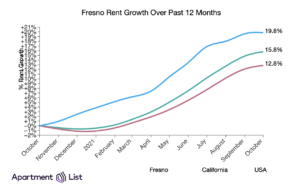Significant Sig Elvin Bell 57-F has announced in a press release that he is donating some of his books to our chapter. A graduate and former adjunct professor and lecturer at Fresno State, who served five elected terms in public office, is donating nineteen books he authored to the Fresno State Epsilon Eta Chapter of the Sigma Chi Fraternity. Seven additional books brother Bell wrote while on active duty in the White House and Pentagon will be subsequently donated to the fraternity when the Department of Defense down-grades the books’ current top-secret classification.
In 2013, he was recognized by the fraternity as a Significant Sig in appreciation of his five terms in elected public office in California, and his remarkable combat and command leadership during a 31-year military career. The highlight of one of brother Bell’s assignments occurred on June 18, 1973, when President Richard Nixon, who knew of Bell’s intelligence work on Russia, ordered Bell transferred from his senior faculty position at the National War College in Washington, DC to the White House. During the next four long days Bell participated with President Nixon and Secretary of State Henry Kissinger in negotiating the first Strategic Arms Limitation Treaty (SALT) with Russia’s leader, Leonid Brezhnev. Prior to the White House SALT summit meeting, Bell led sensitive and highly risky intelligence missions into Russia, Poland, and Czechoslovakia.

During his three-plus decades of military service, he commanded seven different military units, including a Squadron and Group, had four assignments in the White House, a four-year tour in the Pentagon, and was deployed to six different foreign countries. As well as serving 16 years in elected office, Bell is also a retired Air Force Colonel after service in the Army National Guard, the Army, Air National Guard, and the Air Force.
Those attending Bell’s June 30, 1985, military retirement ceremony in the Pentagon included Vice President H. W. Bush, members of the Senate Armed Services Committee, and California Governor George Deukmejian, who presented Bell with the honorary promotion to Brigadier General in the California Air National Guard.
Bell earned a bachelor’s degree in journalism and a master’s degree in public administration from Fresno State. He was a pledge in the Sigma Chi Fraternity ’s Fall 1957 class. He was also an Honor Roll graduate of Fresno’s Central High School. During his student years at Central he was editor of the school newspaper, winner of the annual American Legion speech contest two consecutive years, a champion debater, on the varsity track and basketball teams, President of the Sequoia League of Student Councils, and President of the Hi-Y, the boys’ Christian association. His Central track records in the high jump and the 1,320-yard race prevailed for 21 years before they were broken.
When he campaigned in 1965 for the Fresno City Council at age 27, he became the youngest person ever elected to public office in a major California city, according to the California League of Cities.
In addition to his BA and MPA degrees from Fresno State, brother Bell also has a law degree from LaSalle Law School, a master’s in international relations from the Air War College at Maxwell Air Force Base in Montgomery, Alabama, and a PhD in business administration and management from California Coast University, Santa Ana.

At noon on Thursday, July 1, 1976, Fresno Mayor Pro Tem Elvin C. Bell hoisted the historic bicentennial flag up the flag pole in front of City Hall where it waved in unison for five days with the Stars and Stripes and the California state bear flag. On the morning of July 5, 1976, Bell lowered the flag, folded it in the appropriate manner, had it appraised in value at $138,000, and placed it in his bank vault safe. It stayed there for 40 years. He found a permanent home for the flag at Fresno State when then President Joseph Castro accepted the flag as a prized gift. President Castro directed the flag be flown on campus on July 4, 2016. During subsequent years the flag is displayed at two different sites; a prominent wall display along with a proclamation that describes its significance, in the Henry Madden Library, and in the President’s office “Unfortunately,” Bell said, “the flag’s current fragile condition can no longer withstand being posted, but it is still available to be seen on campus and enjoyed because of its historic significance.
Contributed by Elvin Bell – In addition to donating the flag, I am pleased to provide the books to my Sigma Chi Fraternity library because my years as a Sigma Chi and a Fresno State student were the positive turning points in my life. I will always be grateful to the Sigma Chi leadership who saw and developed a talent in me that helped me win elected office five times, and serve my country on assignments in the White House, the Pentagon and in foreign countries.






